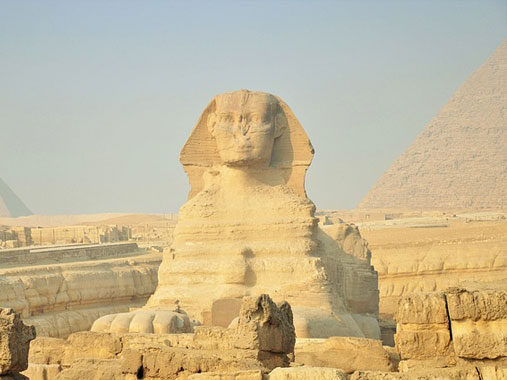Explore the Pyramids of Giza
Explore the Pyramids of Giza
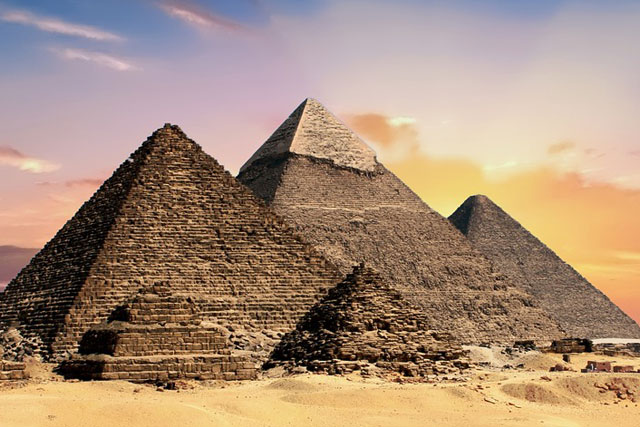
The Pyramids of Giza rise from the desert like sentinels of time—monoliths of stone that have watched over Egypt for 4,500 years, their shadows stretching across sands that hum with history. Just outside Cairo, this plateau isn’t just a site; it’s a portal to the past, where pharaohs built tombs to touch the stars and the Sphinx guards their legacy with a quiet, knowing gaze. The air’s thick with dust and the chatter of guides, while camels plod by, their handlers calling out for a ride. You’ll feel the weight of millennia here—Khufu’s Great Pyramid looms largest, flanked by Khafre and Menkaure, each a testament to a civilization that defied the impossible. Morning’s best—before the heat and crowds peak—though sunset bathes the stones in gold. Bring water, a hat, and a sense of awe; Giza’s not just a visit—it’s a journey through eternity.
Table of Contents
The History Behind the Pyramids
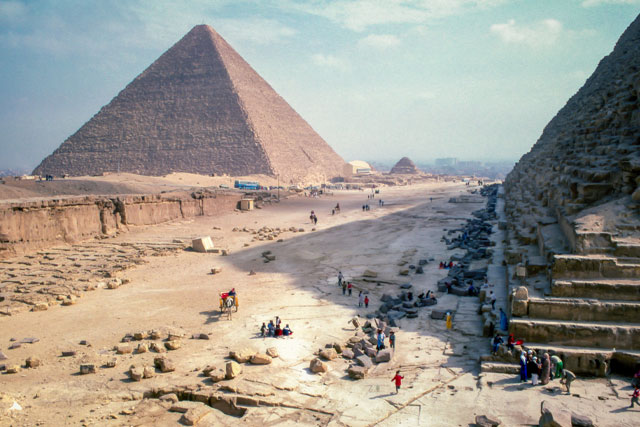
The Pyramids of Giza didn’t just appear—they were born in the sweat and ambition of Egypt’s Old Kingdom, around 2630 BC, when Pharaoh Khufu kicked off this monumental saga. Back then, the Nile was the lifeblood, ferrying massive limestone blocks from quarries while thousands of workers—farmers in the off-season, not slaves like the old tales say—hauled them into place with ramps and grit. Each pyramid was a stairway to the afterlife, angled to catch the sun’s rays and guide the pharaoh’s soul to the gods. Myths swirl around them too—some say hidden chambers still hold treasures or secrets of the stars, though archaeologists keep digging for proof. Stand at their base, and you’ll feel the echo of a civilization that measured time in dynasties, not years. For a deeper dive, hit the Solar Boat Museum nearby—Khufu’s 43-meter cedar ship, buried beside his pyramid, is a time capsule of ancient craft. Bring a curious mind; this history’s as alive as the desert wind.
Visiting Giza: Tips for Travelers
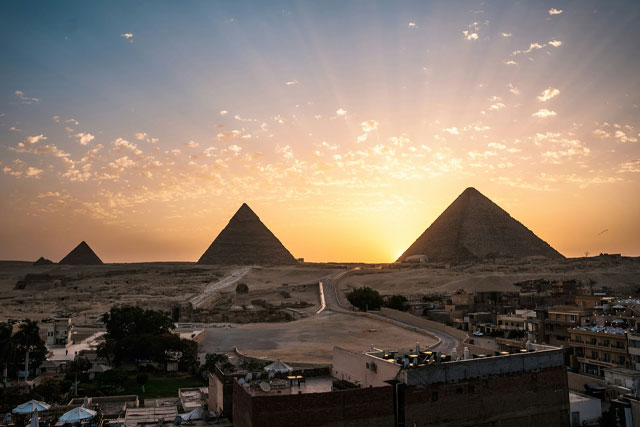
Stepping onto the Giza Plateau is a thrill, but it’s no walk in the park—planning makes it magic. Aim for dawn, around 6 AM when gates open; the air’s cool, the light’s soft, and the crowds haven’t swarmed yet—by noon, the sun’s a hammer and the selfie sticks are everywhere. Dress light but cover up—sandals kick up dust, and a scarf shields you from both sun and hawkers pushing trinkets (smile, say “la shukran,” and keep moving). Camels and horses are fun but pricey—agree on a rate upfront, 50-100 EGP tops for a short ride. The Great Pyramid’s interior is a squeeze—claustrophobics, skip it—and tickets (extra 400 EGP) sell out fast, so grab them early at the gate. Hydrate like your life depends on it; vendors sell water, but it’s cheaper to bring your own. End with a falafel sandwich from a nearby stall—cheap, tasty, and the perfect fuel to soak in Giza’s wonder.
The Giza Plateau: Beyond the Pyramids
The pyramids steal the spotlight, but the Giza Plateau’s got more up its sleeve—crumble-strewn corners and quiet marvels that whisper just as loud. Wander past the trio, and you’ll stumble on smaller tombs—queens and nobles tucked into mastabas, their carvings faded but fierce with tales of the afterlife. Khafre’s Valley Temple looms near the Sphinx, its alabaster floors and massive granite blocks a testament to precision you can still feel underfoot. The workers’ village, a short trek south, peels back the curtain—mud-brick homes and bakeries where bread fueled the builders. From the western dunes, the whole scene unfolds—three pyramids in a row, the Nile glinting far off, and Cairo’s haze on the edge. Sunset’s the time; the stones glow, and the chaos fades to a hum. Bring a zoom lens if you’ve got one—the details pop from afar, and the plateau’s full story comes into focus.
The Great Pyramid of Giza (Khufu)
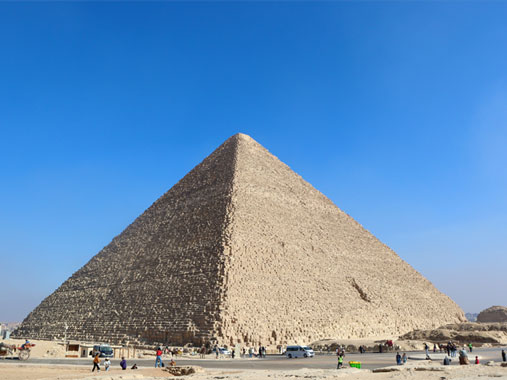
The Great Pyramid of Giza stands alone as the last of the Seven Wonders of the Ancient World—a colossal stack of 2.3 million limestone blocks, each hauled into place by hands lost to time. Built for Pharaoh Khufu around 2560 BC, it towers at 146 meters (now 138, shaved by erosion), its once-smooth casing stripped to reveal the raw core. Step inside—if you dare—the Grand Gallery’s a steep, echoing climb to the King’s Chamber, where a granite sarcophagus sits empty under a corbelled roof. The air’s stale, the space tight; you’ll duck through tunnels that smell of stone and mystery. Outside, vendors hawk papyrus and kids chase you with postcards—haggle hard. Sunrise hits it first, lighting the tip where a gold capstone once gleamed. It’s a marvel of math and muscle—bring a flashlight and wonder at a tomb that’s outlasted empires.
The Pyramid of Khafre
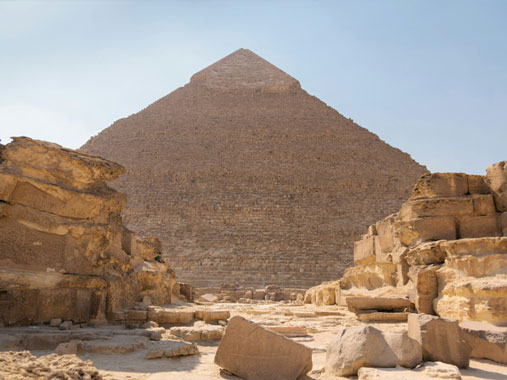
Khafre’s Pyramid catches your eye with a trick—it looks taller than Khufu’s, perched on higher ground, though it’s a hair shorter at 136 meters. Built for Khufu’s son around 2570 BC, it’s the middle child with flair; a chunk of its original limestone casing clings near the top, a tease of how these giants once dazzled under the sun. The mortuary temple sprawls at its base—crumbled columns and silent halls where priests once chanted. You can’t miss the view from here; the Sphinx crouches nearby, tying Khafre’s reign to its enigma. Inside’s simpler than Khufu’s—just one chamber—but the desert wind howls through the cracks. Camels lumber past, their shadows long in the afternoon light; visit then to dodge the morning rush. It’s grand yet grounded—pack comfy shoes and let its quiet power sink in.
The Pyramid of Menkaure
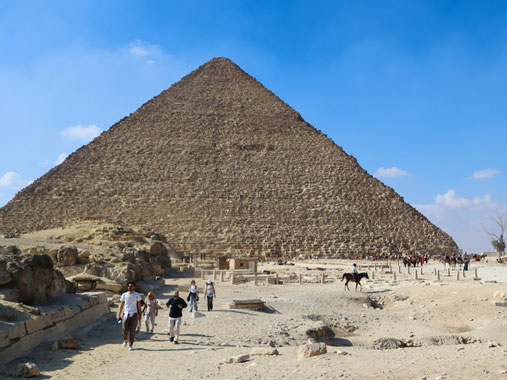
Menkaure’s Pyramid feels like the little sibling—smaller at 65 meters, but no less proud, its base half-clad in red granite that glints when the sun’s low. Built around 2510 BC for Khufu’s grandson, it’s the last of Giza’s trio, a modest echo of its kin, less bombast, more intimacy. A gash scars its north face, a botched 19th-century plunder attempt, but it stands firm. The burial chamber’s deep—bring a light to peer at the basalt sarcophagus, now lost to a shipwreck. Outside, satellite pyramids hint at queens or kin, their stones weathered but whispering secrets. Fewer tourists clog this corner; you’ll hear the crunch of sand underfoot and the distant call to prayer from Cairo. Sunset’s the time—soft light, fewer hawkers. Menkaure’s a gentle giant—approach it slowly and feel the past unfold.
The Sphinx
The Sphinx crouches at Giza’s edge like a riddle carved in stone—lion’s body, pharaoh’s face, staring east with eyes that have seen millennia shift. Cut from a single limestone ridge around 2500 BC—likely for Khafre—it’s 20 meters high and 73 meters long, though its nose is famously missing, chipped off by time or cannon fire (take your pick of tales). Sand buried it for centuries; now it’s free, gazing over a plateau where tourists snap selfies and guides spin myths. Up close, the paws dwarf you, and the weathered flanks show cracks from wind and dreams of ancient priests. Dawn paints it golden, but evening’s quieter—stay late, dodge the midday bustle. No climbing allowed, but you’ll feel its pull anyway; bring a scarf for the dust and let this guardian’s silence speak.


